Haijie Xu
Function-on-Function Bayesian Optimization
Nov 16, 2025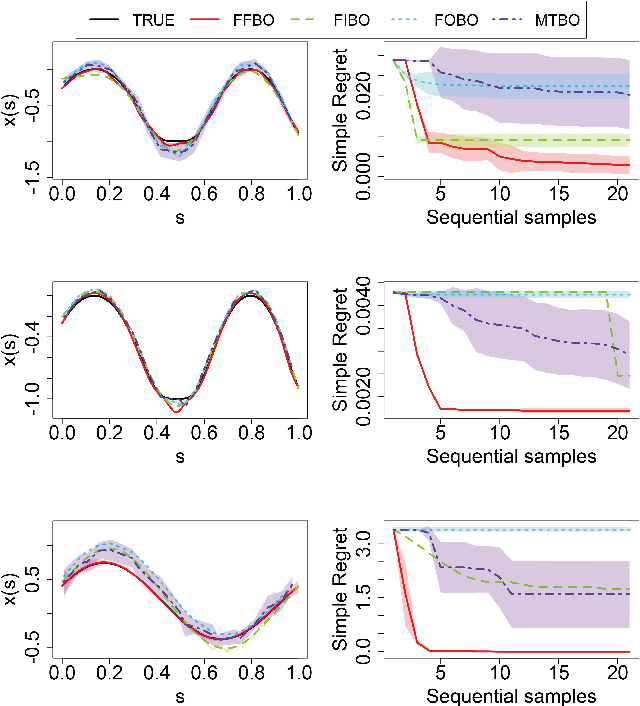

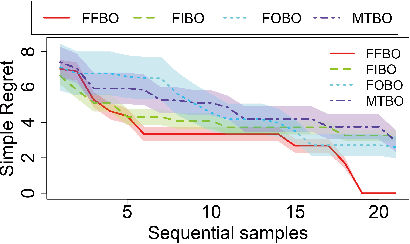
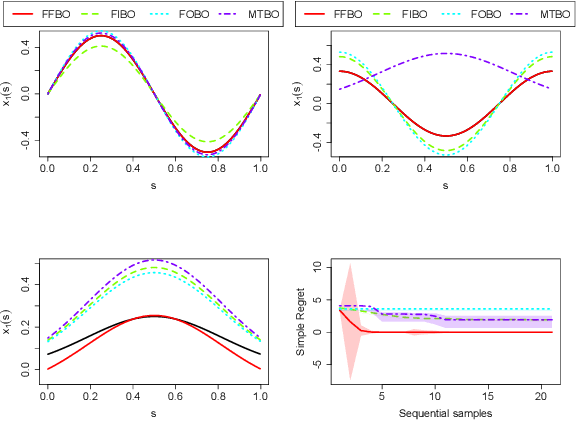
Abstract:Bayesian optimization (BO) has been widely used to optimize expensive and gradient-free objective functions across various domains. However, existing BO methods have not addressed the objective where both inputs and outputs are functions, which increasingly arise in complex systems as advanced sensing technologies. To fill this gap, we propose a novel function-on-function Bayesian optimization (FFBO) framework. Specifically, we first introduce a function-on-function Gaussian process (FFGP) model with a separable operator-valued kernel to capture the correlations between function-valued inputs and outputs. Compared to existing Gaussian process models, FFGP is modeled directly in the function space. Based on FFGP, we define a scalar upper confidence bound (UCB) acquisition function using a weighted operator-based scalarization strategy. Then, a scalable functional gradient ascent algorithm (FGA) is developed to efficiently identify the optimal function-valued input. We further analyze the theoretical properties of the proposed method. Extensive experiments on synthetic and real-world data demonstrate the superior performance of FFBO over existing approaches.
Quickest Causal Change Point Detection by Adaptive Intervention
Jun 09, 2025Abstract:We propose an algorithm for change point monitoring in linear causal models that accounts for interventions. Through a special centralization technique, we can concentrate the changes arising from causal propagation across nodes into a single dimension. Additionally, by selecting appropriate intervention nodes based on Kullback-Leibler divergence, we can amplify the change magnitude. We also present an algorithm for selecting the intervention values, which aids in the identification of the most effective intervention nodes. Two monitoring methods are proposed, each with an adaptive intervention policy to make a balance between exploration and exploitation. We theoretically demonstrate the first-order optimality of the proposed methods and validate their properties using simulation datasets and two real-world case studies.
Functional-Edged Network Modeling
Mar 30, 2024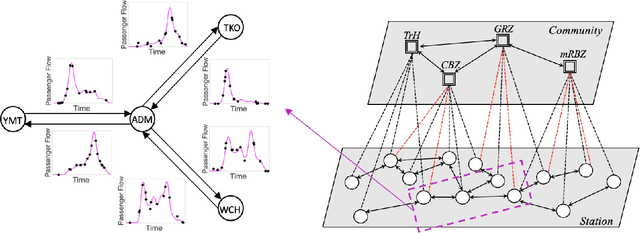

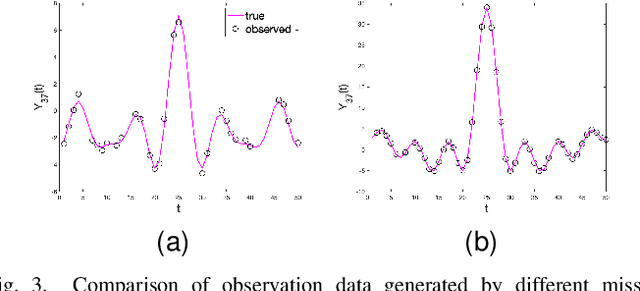

Abstract:Contrasts with existing works which all consider nodes as functions and use edges to represent the relationships between different functions. We target at network modeling whose edges are functional data and transform the adjacency matrix into a functional adjacency tensor, introducing an additional dimension dedicated to function representation. Tucker functional decomposition is used for the functional adjacency tensor, and to further consider the community between nodes, we regularize the basis matrices to be symmetrical. Furthermore, to deal with irregular observations of the functional edges, we conduct model inference to solve a tensor completion problem. It is optimized by a Riemann conjugate gradient descent method. Besides these, we also derive several theorems to show the desirable properties of the functional edged network model. Finally, we evaluate the efficacy of our proposed model using simulation data and real metro system data from Hong Kong and Singapore.
Partially-Observable Sequential Change-Point Detection for Autocorrelated Data via Upper Confidence Region
Mar 30, 2024Abstract:Sequential change point detection for multivariate autocorrelated data is a very common problem in practice. However, when the sensing resources are limited, only a subset of variables from the multivariate system can be observed at each sensing time point. This raises the problem of partially observable multi-sensor sequential change point detection. For it, we propose a detection scheme called adaptive upper confidence region with state space model (AUCRSS). It models multivariate time series via a state space model (SSM), and uses an adaptive sampling policy for efficient change point detection and localization. A partially-observable Kalman filter algorithm is developed for online inference of SSM, and accordingly, a change point detection scheme based on a generalized likelihood ratio test is developed. How its detection power relates to the adaptive sampling strategy is analyzed. Meanwhile, by treating the detection power as a reward, its connection with the online combinatorial multi-armed bandit (CMAB) problem is formulated and an adaptive upper confidence region algorithm is proposed for adaptive sampling policy design. Theoretical analysis of the asymptotic average detection delay is performed, and thorough numerical studies with synthetic data and real-world data are conducted to demonstrate the effectiveness of our method.
 Add to Chrome
Add to Chrome Add to Firefox
Add to Firefox Add to Edge
Add to Edge